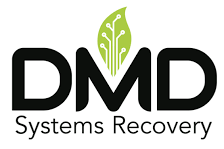Justin McGill, CEO, visionary force and original innovator behind Content at Scale’s cutting-edge technology, shared his enthusiasm: “Building our headquarters in Scottsdale isn’t just about creating a space for our team; it’s about laying down roots in a community that embraces innovation. We’re here to set new benchmarks for what AI can achieve not just in content and marketing, but augmenting and 10x’ing our modern-day workforce.”
Julia McCoy, President of Content at Scale, nine-time bestselling author and content marketing leader transitioning to AI from ten years of leading a human-driven content agency, added: “Leaving my hometown of Texas for Arizona to build the future symbolizes more than just a change of scenery. It represents my commitment to being part of something transformative alongside Justin and our incredible team. Together, we are not only advancing technological boundaries, but also contributing significantly to local economic vitality in the Greater Phoenix and Scottsdale areas.”
The company has signed a lease for a 6,000 square-foot office space within Raintree Corporate Center, signifying its long-term investment into both its operational capacity and community engagement efforts. With plans already underway, this move will generate up to 100 job opportunities for AI engineers, innovative marketing professionals and others.
Content at Scale AI Director, Jeff Joyce, will be moving from South Carolina to Arizona to work with the team. Relocating to Greater Phoenix from international locations include Chief Revenue Officer Ben Harper, who has a decade of experience in sales and business development from England, and Chief Design Officer Simon Ogilvie-Lee, moving from Australia and coming in with a track record as one of the top 3% of UX designers on freelance platforms. The team is moving into Scottsdale for the value of proximity in their new in-person office headquarters and real-time collaboration with the community.
“Content at Scale is situated perfectly in Scottsdale, according to all my friendly AI sources,” said Scottsdale Mayor David D. Ortega. “Thanks to GPEC for their work to connect Scottsdale with another outstanding tech-focused company. Wishing good fortune to our newest community members at Content at Scale.”
As part of its ongoing mission to integrate seamlessly into Scottsdale’s vibrant economy while fostering local talents’ development, Content at Scale plans on adding substantial value through innovative solutions poised to reshape how businesses leverage SEO driven content. Content at Scale’s leadership team recently joined the Arizona Tech Council, and looks forward to meeting more peers in the local community.
“Greater Phoenix, known for its entrepreneurial spirit, pursuit of innovation and leadership in advanced technology, is a fitting landing spot for this pioneering software company,” said Greater Phoenix Economic Council President & CEO Chris Camacho. “Content at Scale will find plentiful growth opportunities in Scottsdale, and it will help the region gain an edge in creative AI application and content production.”
In celebration of this new beginning, Content at Scale invites the community to join Julia McCoy’s book launch on May 1, 2024, from 5 – 8 p.m. at the Raintree Corporate Center community room. The event will feature the debut of McCoy’s latest work, Joy of Failure: How Experiencing Failure Can Bring Massive Breakthroughs for the Entrepreneur in Finding True Joy, Identity, and Vision. Co-authored with Chris Evans, a renowned figure in advertising and traffic generation behind the largest ad agency in the world valued at $70M, the book is a must-read for entrepreneurs seeking insight and inspiration.
Attendees will enjoy an evening of networking, refreshments, and the opportunity to receive a FREE signed copy of the book, while supplies last.
Don’t miss this chance to meet Julia McCoy and Chris Evans, the Content at Scale team, and immerse yourself in the insights that have shaped their success. Join us in celebrating innovation, resilience, and the future of content creation.










